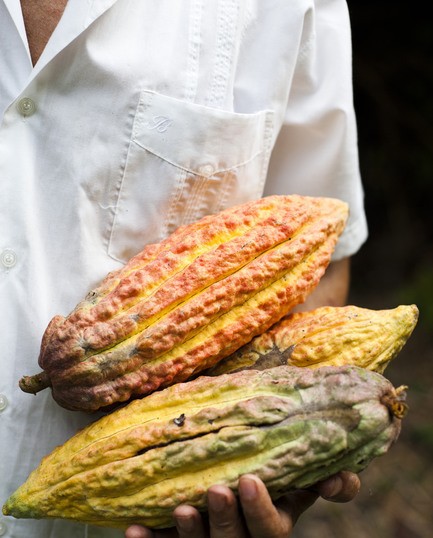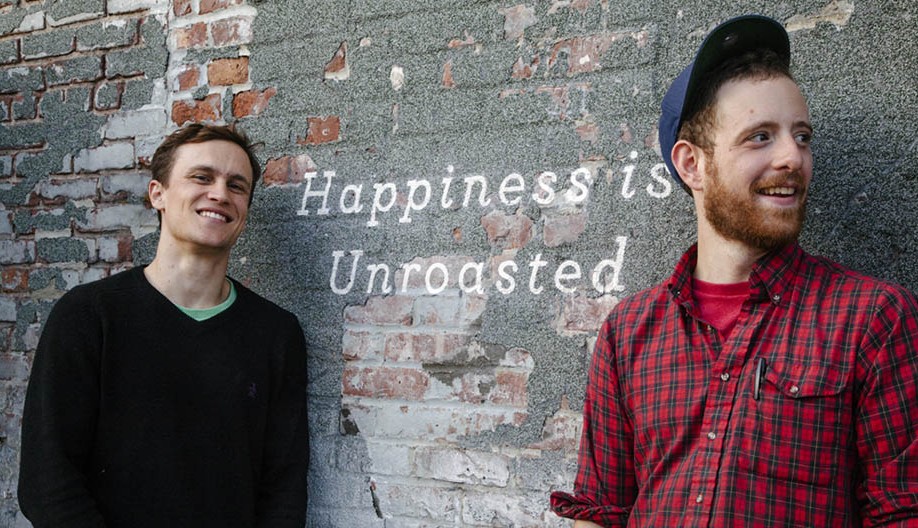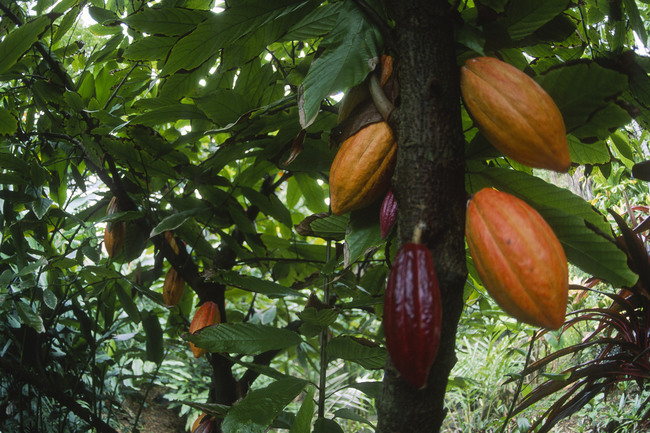A man stands on his plantation holding pods of cacao in the coastal town of Choroni, Venezuela, By Michael Hanson, (Offset), http://www.offset.com/photos/39341
Our ideal cacao farm would likely be located in Ecuador in an area where a few of our plants are already occurring naturally. Ecuador has a multitude of volcanoes (26 total with a few of them extinct but most of them still active) and the cacao tree is native to South America. Coffee beans are also grown in Ecuador and help form an excellent shrub level for the cacao farm. Coffee bushes keep rain and wind from damaging the soil or smaller cacao trees so they’re worthwhile protection. The coffee plant grows to be 3-3.5 meters tall while the cacao tree grows 4 to 8 meters tall so they compliment each other nicely. Having two fruiting crops also allows the farmer a buffer of sorts if one crop fails. For additional wind/rain protection and sun shade we could use Cedela Odorata aka spanish cedar. The cedar tree grows to be 10-30 meters tall so it works nicely as a canopy to protect the delicate cacao trees from harsh sunlight. Cedela Odorata grows naturally in Ecuador and is also a very resilient low maintenance tree that is recommended as sun shade for cacao trees by the world cacao foundation. So with these three plants we’ve established a safe environment for the cacao trees that is made entirely out of locally growing plants. The nearby Ecuadorian volcanoes add the benefit of rich soils filled with volcanic minerals. As a result this cacao farm has entirely local plants, local volcanic soil, two fruiting plants that can be sold, protection from all the elements, and it’s located in a great cacao growing area near the equator. A small home for farmers located on site could be built using the cedar trees. Solar power and rain water collection along with composting would reduce the farms impact on the native land. Utilizing local farmers to work on the farm would bring prior knowledge and paying them a healthy livable wage would help stimulate their economy. When it comes to distribution, if you allow buyers to come to the farm to purchase then you risk their gas powered cars or planes harming the environment. Locating the farm near one of Ecuador’s many rivers and using rafts would provide a system of transporting the cacao to buyers that wouldn’t harm the land.



